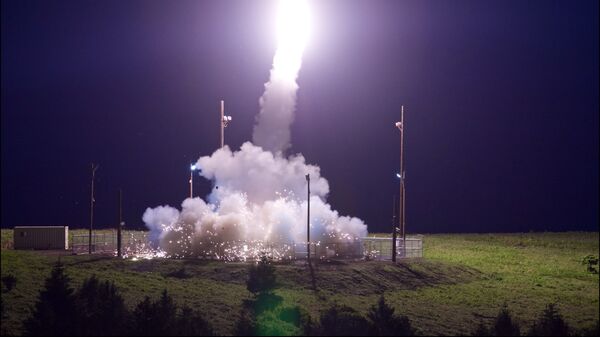The $1 billion Homeland Defense Radar-Hawaii (HDR-H) is supposedly scheduled to come online in 2023, but there was no funding for it to be found in the Pentagon’s fiscal year 2021 budget. The Asia-facing radar is intended to replace the Sea-Based X-Band Radar (SBX), a floating radar platform used to track ballistic missiles and feed the information to interceptors as part of the Ground-Based Midcourse Defense (GBMD) system, which protects the US homeland from missile attack.
US Missile Defense Agency (MDA) Director Vice Adm. Jon Hill said in February that funding had been redirected elsewhere, as existing air defenses are capable of protecting Hawaii for the moment. Instead of GBMD protection for Hawaii, the MDA is considering a layered defense of the new ship-based SM-3 IIA missiles and a THAAD battery. THAAD would make use of the AN/TPY-2 long-range radar already deployed in Hawaii, an exceptionally powerful system that US officials have boasted can track an object "the size of a baseball from about 2,900 miles away."

With funding for the Hawaii radar cut, Rep. Mac Thornberry (R-TX) has introduced legislation to restore it via an Indo-Pacific Deterrence Initiative, a program intended to beef up Pentagon capabilities in the region and inspired by a similar effort in Europe aimed at Russia since 2014.
“Senior officials from both parties, military commanders, and international security experts have told us for years that the Indo-Pacific must be this country’s priority theater,” Thornberry said in an April 16 news release announcing introduction of the legislation.
“They are absolutely correct, and it is time to put our money where our mouth is. These are not all new programs, but by pulling them together under one policy we will be better able to judge our own commitment here at home, demonstrate our resolve to our allies and partners, and deter China. We may not be able to cover all of these programs this year, but it is important that we make a start, and then use this legislation to measure our progress going forward,” he added.
The proposal would add $6.1 billion in funding in 2021 for “enhancing missile defense, intelligence, surveillance and reconnaissance programs, infrastructure, prepositioned equipment and munitions, logistics, training and exercises, and programs to strengthen the capacity of allied and partner countries.” That includes the HDR-H, but also a massive defense upgrade for Guam as well.

Defense News reported Indo-Pacific Command (INDOPACOM) was fully on board with Thornberry’s proposal, having already submitted a $20 billion “wish list” to Congress for what it says are necessary programs to fully meet the expectations laid out by the National Defense Strategy. The 2018 document outlines a fundamental shift in strategic focus away from the War on Terror and toward great power competition with Russia and China.
INDOPACOM told the Honolulu Star Advertiser on Wednesday the radar "represents the solution for the gap in our ability to detect, track, discriminate and defeat ballistic, cruise and hypersonic threats,” with discrimination referring to the ability to distinguish between parts of a rocket and the warheads they lift into the upper atmosphere.


